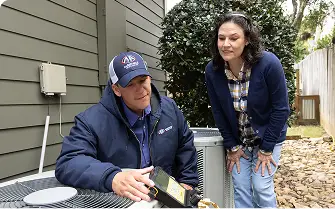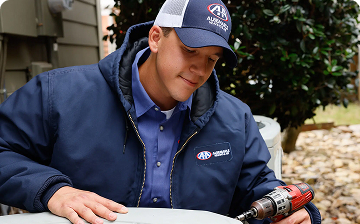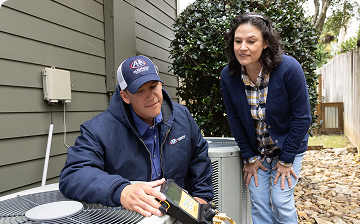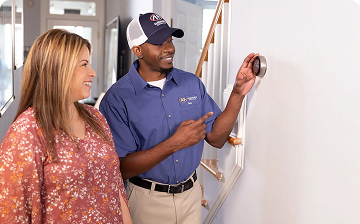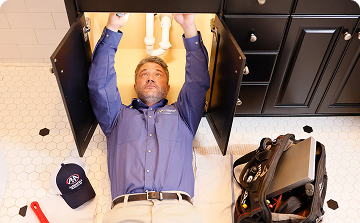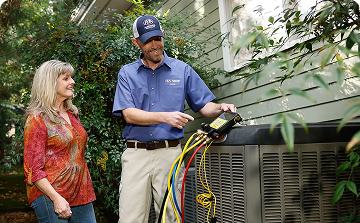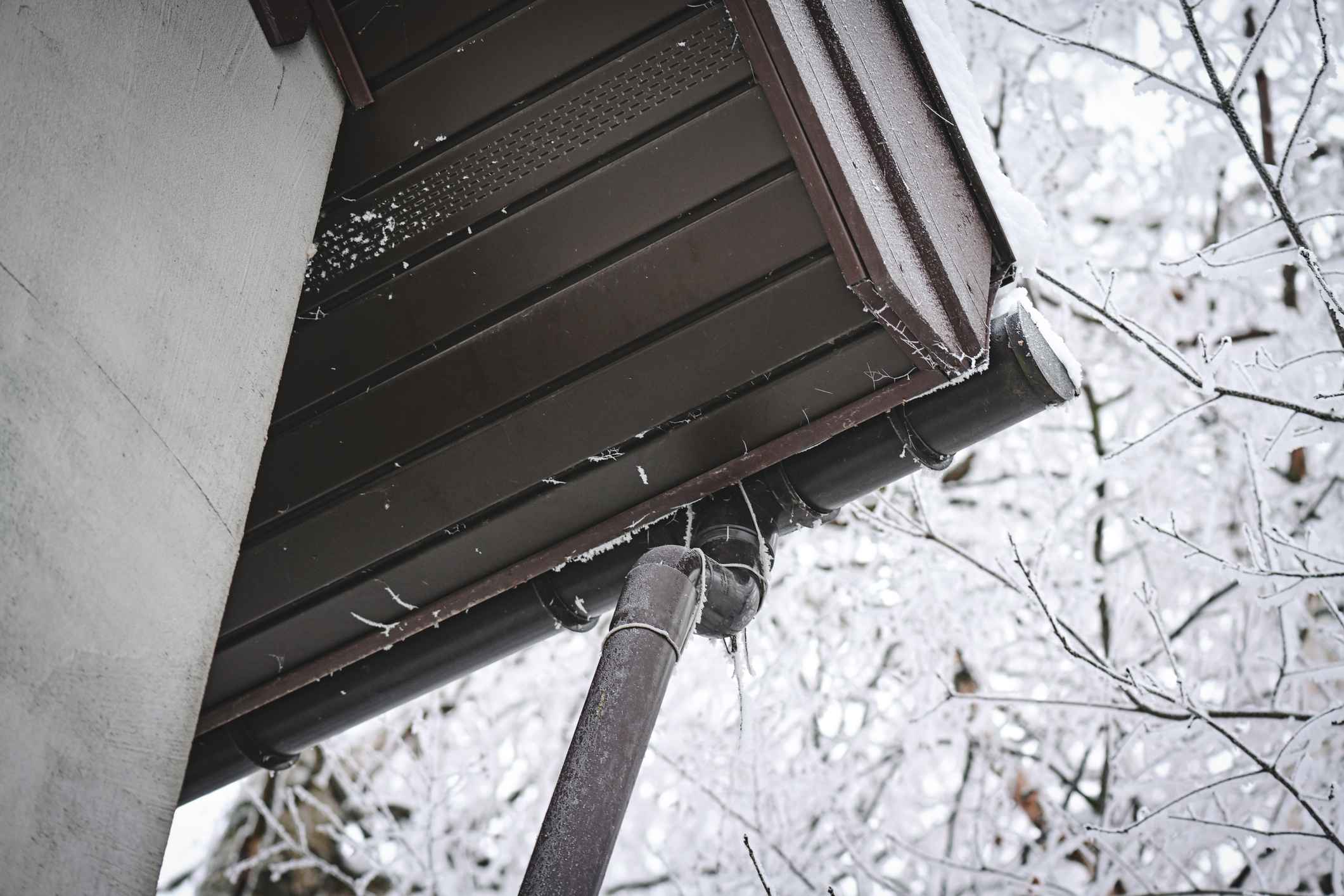
Plumbing in Older Virginia Homes: When Repiping Becomes Necessary

Virginia is home to a wide range of older houses, from early twentieth-century craftsman homes to historic colonial properties. While these homes offer charm, character, and craftsmanship, many also contain plumbing systems that have aged far beyond their intended lifespan. Over time, older pipes become more vulnerable to corrosion, leaks, and water quality issues, creating challenges that homeowners cannot ignore.
As plumbing materials deteriorate, small issues such as low water pressure or discolored water often evolve into larger, more expensive problems. Understanding when repiping becomes necessary helps protect your home, your investment, and your peace of mind.
In this blog, we will explore the plumbing materials commonly found in older Virginia homes, the warning signs that indicate a failing system, the risks of delaying repiping, and what homeowners can expect from a modern repiping project. With the right information and professional support, you can restore the safety and efficiency of your home’s plumbing system before major damage occurs.
Common Plumbing Materials Used in Older Virginia Homes
Many older homes in Virginia still contain original or outdated plumbing materials. Each type of pipe has a limited lifespan and its own unique vulnerabilities. Understanding what is behind your walls helps you recognize when repiping may be necessary.
Galvanized Steel Pipes
Galvanized steel was widely used from the 1930s through the 1960s. While durable at the time, these pipes corrode internally as the protective zinc coating breaks down. Corrosion narrows the pipe, reducing water flow and causing rusty or discolored water. Eventually, leaks develop, often hidden inside walls or crawl spaces.
Copper Pipes
Copper became popular starting in the 1960s and is still used in many homes today. Although copper is long lasting, older copper lines can develop pinhole leaks due to corrosion. Water chemistry, soil conditions, and age all influence how quickly copper piping deteriorates. Many Virginia homes experience copper wear because local water sources vary in mineral content.
Polybutylene (PB) Pipes
Polybutylene was installed in homes from the late 1970s through the mid-1990s. While inexpensive and easy to install, PB piping is known to fail without warning. It reacts poorly with chlorine and other water treatment chemicals, causing the material to weaken and crack. These pipes are no longer manufactured and are often replaced during whole-home repiping projects.
Cast Iron Drain Lines
Cast iron is strong but susceptible to rust, scaling, and eventual cracking as it ages. Many older Virginia homes still rely on cast iron for sewer and drainage lines. As the material deteriorates, homeowners may experience slow drains, sewage odors, or recurring blockages.
Signs Your Home May Need Repiping
Plumbing issues in older Virginia homes often begin subtly, but they tend to worsen quickly as pipes continue to deteriorate. Knowing the early warning signs helps you address problems before they escalate into major water damage or expensive repairs.
Low Water Pressure Throughout the Home
A noticeable drop in water pressure is one of the most common signs of aging pipes. Corrosion, scaling, or narrowing inside galvanized steel or old copper lines restricts water flow. If multiple fixtures experience low pressure, the issue likely goes beyond a simple clog.
Frequent Leaks or Dripping Pipes
Small leaks may seem manageable at first, but they often signal systemic failure in older piping. Pinholes in copper, cracks in polybutylene, or corrosion in galvanized steel can lead to repeated leaks that gradually damage walls, floors, and ceilings.
Rusty or Discolored Water
Brown, yellow, or orange water usually indicates rust inside your pipes. This often occurs in homes with aging galvanized steel or cast iron. Discolored water not only affects taste and appearance but also signals advanced corrosion that can soon lead to pipe failure.
Metallic Taste or Unpleasant Odor
Water that tastes metallic or carries an unusual odor may point to corrosion inside your plumbing system. As pipe materials break down, they can release particles that impact water quality.
Noisy Pipes or Frequent Plumbing Issues
Rattling, banging, or whistling sounds in your plumbing often mean pressure changes caused by narrowing pipes or loose fittings. If your home experiences repeated clogs, slow drains, or inconsistent water flow, it could be a sign that your entire system is aging.
Recurring Repairs That Do Not Solve the Problem
When plumbing problems continue to return, it usually means the pipes are reaching the end of their lifespan. Instead of repairing one issue at a time, repiping offers a long-term, reliable solution.
Risks of Delaying Repiping
When plumbing systems in older Virginia homes begin to fail, delaying repiping can create serious problems. What starts as a minor inconvenience often turns into a costly and disruptive emergency. Understanding the risks helps homeowners decide when it is time to take action.
Water Damage to Walls, Floors, and Ceilings
Aging pipes can leak slowly for months before noticeable signs appear. Even a small leak can soak drywall, weaken flooring, and damage structural framing. Over time, this hidden moisture leads to stains, warping, and costly repairs that far exceed the expense of repiping.
Mold and Mildew Growth
Moisture trapped inside walls or under floors creates ideal conditions for mold and mildew. These growths can spread quickly and pose health risks for your family. Mold remediation is expensive and often requires significant demolition to access contaminated areas.
Increased Risk of a Major Plumbing Failure
Older pipes, especially galvanized steel, copper with pinholes, or polybutylene, can burst without warning. A sudden pipe rupture can flood your home, destroy belongings, and create long-term water damage. Repiping before failures occur is far more cost effective than addressing emergency repairs.
Rising Water Bills and Wasted Water
Small leaks and inefficient pipes waste significant amounts of water over time. You may notice your utility bills rising even though your household water usage has not changed. Repiping restores efficiency and prevents unnecessary waste.
Lower Home Value and Insurance Concerns
Plumbing systems are a major selling point for homebuyers. Older or failing pipes can reduce property value and complicate real estate transactions. In some cases, insurance companies may raise premiums or decline coverage for homes with outdated or high-risk plumbing materials.
What Repiping Involves
Repiping an older Virginia home is a detailed process, but with the right professionals, it can be completed efficiently and with minimal disruption. Understanding each step helps homeowners feel confident and prepared.
A Thorough Inspection and Planning Stage
The repiping process begins with a full inspection of your home’s plumbing system. A licensed technician evaluates pipe materials, visible corrosion, water pressure, and any recurring issues. They also identify which pipes need complete replacement and which components can remain. Once the inspection is complete, a customized repiping plan is created based on the home’s layout and the scope of work required.
Choosing the Best Replacement Materials
Modern plumbing materials offer better longevity and improved performance. The two most common options include:
- PEX piping, known for flexibility, resistance to corrosion, and fast installation.
- Copper piping, valued for durability and long-term reliability in many older homes.
Your plumber will recommend the material that best suits your home’s design, water chemistry, and budget.
Accessing and Removing Old Pipes
During repiping, small access points are created in walls, ceilings, or crawl spaces to reach the existing pipes. The old plumbing lines are carefully removed or capped off to prevent future issues. Professionals take steps to keep the workspace clean and minimize disruption to your home.
Installing the New Piping System
Once access is created, new pipes are installed throughout the home. This includes connections to sinks, tubs, showers, toilets, and water heaters. Technicians ensure every joint is secure and every line is properly supported to prevent future stress or wear.
Testing the New System for Safety and Performance
After installation, the entire system is pressure tested to check for leaks and ensure strong, consistent water flow. Any adjustments are made before closing up access points. Once testing is complete, walls or ceilings are repaired, leaving your home clean and fully restored.
Typical Duration of a Repiping Project
Most full-home repiping projects take a few days to complete, depending on the size of the home and the complexity of the system. Many homeowners are able to remain in their homes during the process with only minor interruptions to water service.
Benefits of Repiping
Repiping an older Virginia home delivers long-lasting improvements that go far beyond fixing leaks or improving water flow. A full or partial repipe enhances your home’s safety, efficiency, and overall value, making it one of the most beneficial upgrades for aging plumbing systems.
Stronger and More Consistent Water Pressure
New pipes eliminate blockages caused by corrosion and mineral buildup. This restores smooth, steady water flow to every faucet and fixture. Showers run stronger, appliances perform better, and daily tasks become more efficient.
Cleaner and Safer Water Quality
Aging pipes can release rust, scale, and metal particles into your water. Repiping removes these outdated materials and replaces them with modern piping that keeps your water clear, fresh, and safe for your family.
Reduced Risk of Leaks and Major Failures
New piping significantly lowers the chances of sudden leaks or burst pipes. Modern materials such as PEX resist corrosion and temperature fluctuations, making them ideal for Virginia’s climate and water conditions.
Increased Home Value
Buyers place high value on updated plumbing systems. Repiping improves marketability and can raise the overall value of your home. It also eliminates concerns during inspections, making the selling process smoother and more predictable.
Lower Long-Term Maintenance Costs
Investing in repiping reduces the need for frequent repairs. With a modern plumbing system, homeowners avoid recurring leaks, water damage, and emergency service calls, saving money and stress over time.
Better Support for Modern Fixtures and Appliances
New piping is designed to handle the demands of modern dishwashers, washing machines, water heaters, and filtration systems. This helps your appliances run more efficiently and last longer.
Restoring Confidence in Your Home’s Plumbing System
Repiping is one of the most effective ways to protect an older Virginia home from leaks, water damage, and declining water quality. When aging pipes begin to show signs of corrosion or repeated failure, replacing them with modern materials offers long-term reliability and peace of mind. A new piping system improves flow, enhances safety, and helps your home operate more efficiently every day.
Taking action before a major plumbing failure occurs is the best way to avoid costly repairs and unexpected emergencies. With expert guidance and professional installation, repiping ensures your home’s plumbing system can continue to support your family for many years to come.
For trusted repiping services backed by local experience and high-quality workmanship, contact Albemarle Heating & Air. Our team is ready to evaluate your plumbing, answer your questions, and recommend the right solution for your home.
CHARLOTTESVILLE AND SURROUNDING AREAS Albemarle County | Fluvanna County | Louisa County | Nelson County | Augusta County | Madison County | Greene County | Orange County


